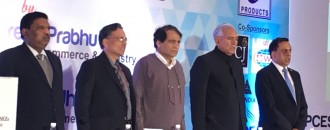
Missing the Woods for the Trees!
Steven Philip Warner | The Dollar Business
Eldrick Tont – the name does represent whatever an individual can achieve. Greatness, popularity, wealth, fame, praiseworthiness, and even indignity. For Eldrick, success was quick to come. Much before he walked out of his teenage shoes, he had become the number one in the world in his business. His ascent to being the best in the business did come early, and it wasn’t just a flash in the pan. He stayed. Rooted. Between early 1998 and late 2009, event after event, for abundance of luck or lack of an able, mortal competitor, he continued to hit pay dirt! The second richest African American, he took the world by storm. Endorsements followed his game, wealth followed his fame, and in a matter of about two decades he became a big cheese in the sports industry. When 2009 ended, however, he was found hunting for a second chance at reputation. His extramarital indiscretions won him public scolding and forced him to concentrate on matters other than what had made him the king of his game. Since 2010, it’s been five-and-a-half years. Barring a few months in between, Eldrick was never his former self. Suddenly it appeared that he’d lost steam. Game after game, he seemed to be making a pig’s ear of his sport. A day before India’s new Foreign Trade Policy was announced, he fell outside the top 100 rankings for the first time since he had turned professional two decades ago. He is Woods…Eldrick Tont “Tiger” Woods. Woods’ story is like I said earlier, a story of fame and shame, rise and fall. And that he became more talked about his villainy than he was when he was winning tournaments in scores with his birdies, pinch shots and drives. His victories were televised and written about in regular sports channels and columns. His fall was televised and watched, written about and read with excitement, almost everywhere. That famous smile with the shadow of his cap’s bill covering his eyes had suddenly become a symbol of disaster. One man’s meat being another’s poison is a popular adage. But a poisoned meat is always more interesting to discuss. Isn’t it? China is headed down the path where Woods’ shoe-marks are still fresh. And in a fashion as sudden. From being the hallmark of the world of exports and GDP growth, from its protected-yet-open economy being praised, from being labelled the factory of the world with iconic brands making it even more popular, from joyful debates on how it blew to smithereens the American manufacturing dream and surprising approvals of its style running the country (from how the Premier is chosen to how foreign companies are forced to use and employ Chinese and how its currency value is decided every time a cock crows!)…much has now changed. Words like “fall”, “shock”, “slowdown”, “reduced” and “trouble” are now used to describe the dragon’s firepower. Now, all predictions and criticisms are about the after party hangover in China that is said to last a long time. It’s interesting how depreciation of the yuan in a day became such an interesting headline across dailies – the yuan was almost always, for decades, controlled and kept below its real value! But then, when China’s stars were right, the world was forced to gulp down whatever numbers suited the moods of the Communist Party. No more. And in the times to come, be it media in the West or in India, talks about China will get louder; and every time (almost!) there will be a chat on how the Chinese bandwagon overweighed itself with excess capacity in the past three decades, why all talk about it having made a killing on the exports market with all the swagger about wages and youth was oh! so myopic, and how soon will the vast spans of manufacturing and warehousing clusters across the Chinese east coast become ghost towns. But almost no one (almost!) will hereafter talk about why China became great in the first place. The positives that made ‘Made in China’ an example to be inspired from will be written off as offences. It will be like how Tiger Woods became a notorious celeb and lost his fans and endorsements overnight. And in this process, we will miss the woods for the trees! Want an example? The awe-inspiring story of export subsidies that the Chinese government gave to exporters has assumed a bitter flavour. It is now being touted as a to-be-avoided, bad start to fuel a dreamy future. [We’re talking about a future like a sustained 10-15% y-o-y growth in GDP and export numbers, one that lit up the common Chinese sky in the past three decades.] And this aspect of export incentives and subsidies is by choice or chance closely connected to my recent visit to India’s national capital. I am not referring to the torturous Indian summer heat; I mean the interactions with two officials in two prime government departments at the Centre – the Ministry of Commerce & Industry (MoC) and DoR, Ministry of Finance (MoF). Both were narrowly divided in their perspectives about export incentives and subsidies, because of the very task assigned to each at the Centre. [You naturally don’t expect a “pro-incentive” department representative to speak in the same language as another, for whom incentives and subsidies are revenues lost.] But only narrowly divided. The MoC official opined that while incentives are required, sooner than later, India’s export community will have to learn to live without this support system; as per him, exporters cannot win a marathon without crutches and the bigger danger is that given WTO norms, with India surpassing the $1000 GNP per capita limit, the government cannot continue to subsidise exporters. As far as the DoR official was concerned, he seemed to be a firm believer in both a quiet work environment and giving Indian exporters no incentive support whatsoever. He outrightly announced that incentives and subsidies do no good to exports of an industry or country. He was seemingly unhappy about the fact that 21-23% of his department’s revenues in recent years were lost to incentives and subsidies given to a thankful foreign trade community of India – the exporters! Should he be so upset? For China, no department came before the nation. And that’s why they were fortunate enough to win critics when things started looking bad. Can we focus on macroeconomic awesomeness first and worry about departments later? In my view, export incentives and subsidies have been criticised enough. Armchair economists and half-blinded experts who probably need more Visa-triggered business tours have even gone a step further to establish how a country’s consumers lose when the exporter community is subsidised and incentivised. By how much? Anywhere between 1-3% (and they call it anti-welfare effect). For a nation like India, where exports account for over 25% of GDP, the very idea of doing away with export incentives and subsidies appears so indiscreet. The central idea behind these incentives should be to fuel exports to a level where even Singapore (where the exports-GDP ratio is almost 2) is inspired, while ensuring that adequate welfare measures are adopted for making lives growingly comfortable at the bottom of the pyramid, so that the domestic consumer class gives adequate cushion against a global downturn. You can only do so much. Look, if the world is in a bad shape and nations are going broke, you can’t get down to blaming your pro-export policies that were framed and executed in good faith. In a globalised world, a country is only as strong as it is connected through trade and policy relations. Just like you are on Facebook and Twitter. Imagine how loudly people boast of a million fans on FB or followers on Twitter. And if incentives make India bigger, more powerful, even though it may have a negative fallout or two, the minuses are worth overlooking. The other charge against incentives is that it weakens the earning capacity of the customs department. Believe in this statement and we’re talking about you being penny wise, pound foolish! Here’s why: In FY2014, the amount forgone by DoR on various export promotion and remission schemes amounted to Rs.60,168 crore. Frankly, this number is misleadingly bloated. Pure export incentives that year (if we include just “incentive” schemes like FPS, FMS, MLFPS, VKGUY and benefits given to units in SEZs/ STPs and EOUs) amounted to just Rs.24,662 crore. The same year, revenues forgone by the Customs totaled Rs.3,49,405 crore. Meaning, export incentives were directly accountable for only 7% of revenues forgone by Customs. 93% (the lion’s share) was on account of losses incurred due to FTAs/RTAs that India signed with various countries over the years. So if the Customs is genuinely concerned about export incentives, it should first convince the government to stop rubbing elbows with every foreign delegate and doctor the bleed by working out a zero loss alternative to financially unsound trade agreements! This one’s a case of blaming a leak in the tap when the rains had been doing the damage forever! [To understand how we arrived at the figure of Rs.24,662 crore in incentives, all you have to reflect on your school days: If your parent or guardian made a promise to reimburse your pocket money spent on buying pencils, examboards and erasers if you passed the examination with flying colours, would you have considered that an “incentive”? Logically, that’s a “reimbursement” or a “remission” that was anyway due to you. But of course, a gift valuable enough, over and above the remission, would be the real “incentive”!] During FY2014, our total merchandise and services exports totaled Rs.28,22,980 crore - a mountain of a number as compared to export incentives that year! To understand which is more significant a number, all you have to do is use the same logic taught in junior school to compare numbers – count the commas or simply divide one by the other. Here’s how you need to look at these numbers: Don’t miss the woods for the trees. Don’t be penny wise, pound foolish. Look at what we have at stake – the future of India’s global trade. It’s not the magnitude of the cost that a country bears in the form of export incentives that matters. It’s more about how much capacity an economy has to bear those costs. For India, revenues forgone amount to just a paltry 0.7-0.9% of total exports value. That, this economy deserves…and more. Talking of incentives as stimulus, a quick analysis makes matters more clear. The correlation coefficient of export incentives offered and exports (by value) for India during the past six years is 0.6. Even those much against incentives will agree that it’s a good indicative sign that exports work better with offered incentives. To add another metric, the correlation between exports incentives and trade deficit is 0.1 (so weak that the incentives can be written off as anti-trade deficit for any reason). Various studies confirm that incentives can boost a nation’s export. And like how! How about a quick tour on this one? Let’s start with our rather unpopular neighbour. China. A research paper titled, 'China's Pure Exporter Subsidies' by Prof. Defever of the LSE and Prof. Riaño of the University of Nottingham concluded thus, “Our research finds that as a direct consequence of these [export] subsidies, over a third of Chinese manufacturing exporters sell more than 90% of their produce abroad. To put this in perspective, fewer than 2% of French exporters and 0.7% of US exporters display such high export intensity. Encouraging firms to export most of their production effectively shields domestic producers from tougher international competition. Thus, pure exporter subsidies constitute a mercantilist trade policy, which boosts exports while simultaneously protecting China’s local industry.” Today, China’s expenditure on various subsidies and incentives given to exporters exceed 1.5% of its massive multi-trillion dollar economy. That of India is just about 0.6% - a comparison worth a thought. From China, we fly South-eastwards closer to the equator. Singapore. An empirical study by Chow-Wei Lan of the Economic Development Board makes the case for pro-incentive camp adequately clear. Titled, ‘Singapore’s export promotion strategy and economic growth’ the Working Paper reports how “Parallel to Singapore’s miraculous growth was an even more spectacular increase in exports. Between 1965 and 1988 Singapore’s annual growth of exports was 7.6% in constant prices – twice that of the middle-income country. The evidence is quite conclusive: countries applying outward-oriented development strategies had a superior performance in terms of exports, economic growth, and employment whereas countries with continued inward orientation encountered increasing economic difficulties.” Singapore adopted an aggressive export promotion strategy and built itself on foreign investments. With a dual focus on FDI and growing exports, despite not having produced a single computer component until 1980, Singapore became the largest exporter of disk drives in the world by 1983. South Korea is a similar experience. Popular developmental economist, researcher and former MIT Professor, Alice H. Amsden, while referring to South Korea’s ascent in the world of exports argues in her book titled, “Asia's next giant: South Korea and late industrialization” that “the architect behind the emergence of this new ‘Asian tiger’ is a strong, interventionist state, which has wilfully and abundantly provided tariff protection and subsidies. The incentives made available to exporters took the form of direct privileged access to import licenses and preferential interest rates. Thus export promotion entailed substantial government involvement.” From consumer durables to automobiles, Korean brands have flooded the world market – but it all began one fine summer of 1960! If we talk about Asian nations, the typical case of Philippines throws greater light on this subject: it proves how it is not just small and micro sized industries and clusters that require export incentives. Even mature industries perform better when incentives are handed over to them. Many researchers till date have conducted studies on the impact of export incentives and subsidies on overall economies, and in most cases have found this proactive government intervention working wonders for either certain industries or the economy as a whole across markets in the Middle East, South America and Africa. Columbia, Ethiopia, Iran, Tunisia, South Africa, are just a few that come to mind. A World Bank report titled, ‘The Impact of Export Tax Incentives on Export Performance’ thumpingly validates the positive impact of incentives on exports and a particular industry. It brings to the fore evidence from the automobile sector in South Africa, with researchers Madani and Mas-Guix analysing the impact of export incentive and subsidy-based Motor Industry Development Program (MIDP; implemented in 1996) on the industry’s exports over a period of a decade. It concludes thus, “The original goal of MIDP was to help the automotive industry in South Africa adjust to trade liberalization and become internationally competitive. In simple terms, it consists of an import/export complementation arrangement, whereby the local value-added of components or built-up vehicles exported earns credits that can be used to rebate import duties on components and vehicles. The analysis finds that the impact of the program on automotive exports in South Africa is positive and significant.” What’s most interesting about this particular study is this line that speaks volumes: “The largest response to the program in terms of improved manufacturing exports occurs with a delay after the adoption of the law, suggesting that exports need time to fully react to the incentives.” That’s lesson enough for India, where the incentive rates offered are sometimes more volatile than the weather. There is another reason why higher incentives need to be doled out sooner than later. In para 2(b) of Article 27 of WTO’s Agreement on Subsidies and Countervailing Measures (SCM), WTO member nations that are developing markets (read: India) are allowed a maximum of eight years to phase out all export subsidies from the year the GNI per capita (as per World Bank records) crosses the $1000 mark. India crossed that level in 2008. Which means beyond 2016-17, WTO pressure on India to do away with export incentives and subsidies will mount. Of course, India has a way out if it can explain to WTO how its GNI per capita is spurious. Despite the metric being in the $1000-plus range, India still suffers from a high Gini index (that explains the level of inequality in wealth distribution in a country, with 0 representing perfect equality and 100 implying perfect inequality). India’s index is 33.6, which means there is more wealth disparity in India than there is across nations like Iraq, Ethiopia, Kazakhstan, Kyrgyz Republic, Lithuania, Niger and many others who don’t qualify to be called high developing or developed yet! And even if there is pressure from the WTO, the Centre will have to stand for the export community, justify its case with all the breath in its lungs. Indian policymakers don’t have to feel guilty. Nations have never paid real heed to the $1000 cut-off. Really. South Africa, Singapore, Argentina, Tunisia, Australia and many other nations crossed this figure even before the WTO was born in its current form in 1995. And incentives in whatever forms may be, are still being given to their exporters. Look at China. Articles 25.1 & 25.2 of the Agreement makes it mandatory for all WTO members that they present a true and timely report of incentives and subsidies offered to exporters before June 30 each year. China joined the WTO in December of 2001. It was precisely that year that its GNI per capita crossed the $1000 mark. So it shouldn’t have been allowed to give subsidies beyond 2009. Welcome to 2015. Chinese export incentives and subsidies continue to grow. What has China done to respect the SCM Agreement Article 25.1? Allow me to quote just the first line from US’ formal complaint to WTO’s Committee on Subsidies and Countervailing Measures, made on October 15, 2014: “The United States notes that China has submitted only two subsidy notifications in its 13 years of WTO Membership and has not notified any subsidies provided after 2008.” In two complaints (one in 2011 and another in 2014), US has listed 310 export incentives and subsidies that China hasn’t reported to the WTO till date. Lesson: Let’s not preach to a preacher. I’m not saying India should copy China, salute its obstinacy and break hearts in WTO. No it should not. But what I say is rather than being submissive, it can stand up for its most precious of global ambassadors (the exporter community) and stand by them. Questioning the magnitude and longevity of incentives is not what will fulfil the Indian foreign trade dream of crossing the $900 billion in exports by FY2020. We need to have our exports growth equaling that of China’s between 2009 and 2014. And for that, if we remain tight-fisted almost to the point of being miserly when it comes to incentivising exports, our dream will remain just that. A dream! Our policymakers can dig into Herzberg’s motivation theory. China has used both X and Y formats; actually more of X because it has forever focused on a factory-led growth where people are simply cogs in the factory wheels. We as a nation, while using X can apply more of Y. You don’t have to do what someone else did, to do the same thing better. Export incentives aren’t crutches – they are shock absorbing sneakers that will get India to cross the finish line in this foreign trade marathon. And let’s not worry about loss of fame – like it happened with Woods and is happening with China. Let’s not miss the woods for the trees. Let’s focus on awesomeness first.





 to success.
to success.